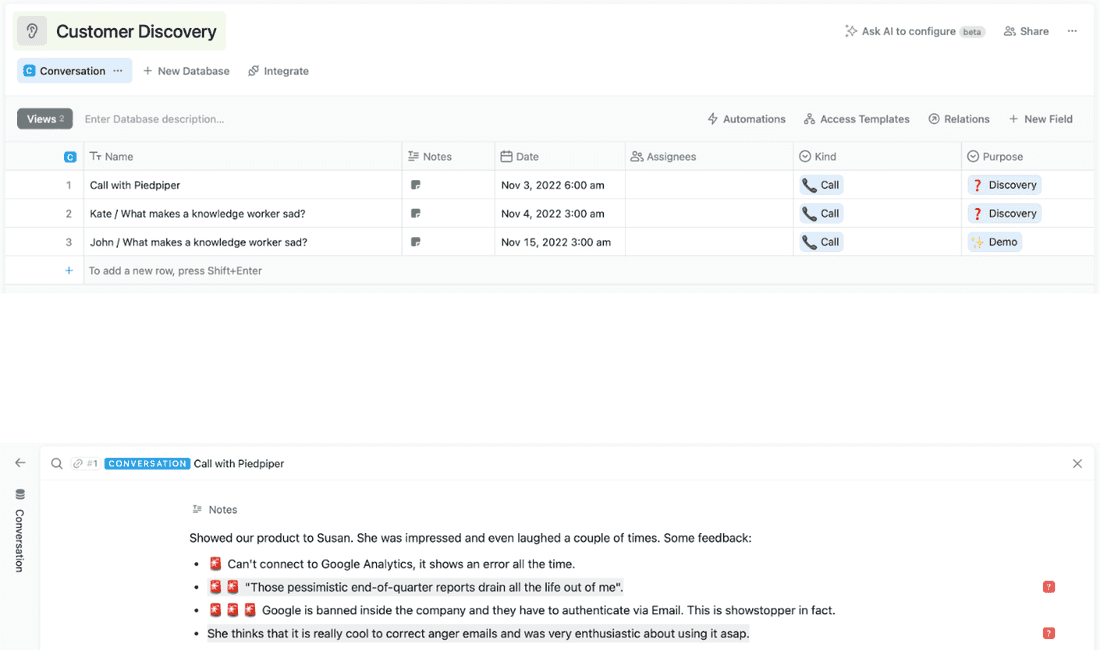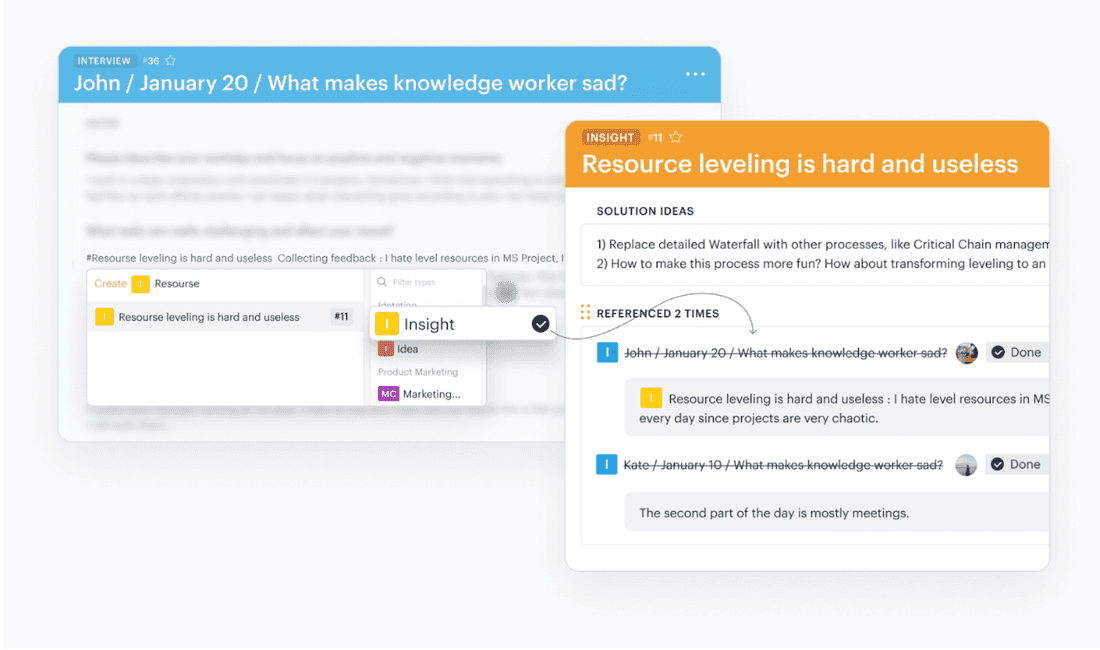Customer-Centric Product Management 101
This might sound offensive or brash, but are you really putting your customers at the heart of your products? Are you simply talking the talk, or are you truly walking the walk? It’s true that “customer centricity” can be an eye-rolling buzzword, but treating it that way often leads to a self-fulfilling prophecy of lackluster product design.
If you’re now itching to see how you can actually implement customer-centric product strategies, you’re in the right place. In this post, we’ll be:
- Getting to the gist of what customer-centric product development is
- Serving up practical tips so you can instill customer-centricity into your products
- Going over concrete examples of customer-centric product management
What is Customer-Centric Product Development?
Product development, at its core, can sound quite methodological and driven by checklists and roadmaps. That drive to “get things done” and follow the research, planning, design, testing, and launch phases of the process can unintentionally remove the human and user-oriented aspects of product development. Make no mistake – this structure is there for a reason, but customer-centric product development helps you remember to adapt and revisit what your customers want.
In customer-centric product development, empathy is your secret weapon – it’ll let you improve customer understanding, provide customer value, and foster customer relationships. You almost have to conduct a mini Freaky Friday-esque experiment and swap places with your customers. And that means figuring out what brings them joy, what frustrates them, how they conduct their lives, and how your product fits into their day to day.
5 Tips to Do Product Development in a Customer-Centric Manner
Having empathy sounds nice and all – but it isn’t an inherent strategy that you can incorporate into your product development plans. Thankfully, there are many tips and strategies that product managers can infuse into their product life cycle.
- Dial into your audience’s needs:
Getting familiar with your customer base can be quite the feat. You’ll have to observe your audience, get their first-hand opinions and thoughts, and connect the dots until you truly understand what they need and who they are. Having software that will help you aggregate all this information will keep you organized, whether it’s an analytics tool or a CRM system. With Fibery, for example, you can use the Customer Discovery template to document all your findings from different sources and spot recurring needs and pain points.

- Become a problem solver: The role of a product manager, or really anyone in the product development space, is to be a problem solver. Most products exist in the world to solve a problem – apart from those weird and wacky creations that people have just to have. There are so many angles to look at the customer from. Are there certain issues that your specific audience has or unmet needs your product could provide for? Receiving that information is another story. Will you conduct interviews and online surveys, try out social listening, or go for different strategies at each stage of the customer journey?

- Try out co-creation: If two heads are better than one, then the many heads that make up your audience should be even better. Teaming up with your customers directly could be an even more intimate and direct way to craft a product designed for them. No one knows your audience better than themselves, so they might be able to make the brainstorming process more valuable and provide immediate feedback on prototypes.
- Deliver a one of a kind experience: Your product needs to wow the audience and exceed expectations. The product might serve its function really well, but does it go above and beyond and bring the unexpected? Ordering a generic product from Amazon might not give you the quality or the personalization that the audience wants, but it certainly allows people to access a super affordable product in just one day. And that’s why people choose Amazon over other marketplaces.
- Revisit your product: Products are an art form, and as you’ll often hear the idea that no painting or song is really ever finished – neither should your product. Even after it finds its place on the shelves or in the hands of your customers, it should stay an ongoing creation that goes through changes based on feedback, analysis, and changing trends. When it stays a work in progress, customers see the passion and effort you put into your goods, fostering stronger bonds between them and your brand.
What Are Some Examples of Customer-Centric Product Development?
We’ve seen customer-centric product development propel many successful brands to the top. One of them is Salesforce.
-
Salesforce is known for their reputation in the customer relationship management (CRM) sphere. Their program is all about the customer, allowing them to manage marketing, service, and sales in one suite. With SaaS (software-as-a-service) companies, the product evolves every second, and Salesforce ensures that their users get to access features and tools that matter most to them. They created IdeaExchange, a community forum where customers could share their thoughts and ideas. People vote on features, and their product team goes through special prioritization cycles to focus on aspects that are most valuable to their users.
-
HubSpot is also famously customer-centric. With their goal for businesses and customers to be able to create their own remarkable customer experiences, their product development practices naturally revolve around customer feedback. Not only does HubSpot segment their products with a Marketing Hub, Sales Hub, Content Hub, etc., but they also own HubSpot Academy, a place where their users can access learning content, earn certifications, build on their expertise, and more.
The PM’s Hot Take
Way too many product managers and people involved in the product management process look at the idea of customer-centricity as pandering to every single customer whim, but it’s more about gathering all the insights you can and sifting through it for value. If PMs were to indulge in everything customers would want – that just wouldn’t be good for business viability. So, the answer is to find the sweet spot between customer centricity and business viability. Our jobs within the product management process aren’t to echo what customers want but to figure out what they actually need and find the most creative and lucrative way to deliver.
Conclusion
So you can get familiar with your customers, we’ve gotten you familiar with what customer-centric product development really means. Rather than look at customer centricity as a trend, there’s a way of viewing it that will actually help. Creating products under a “made-for-you” lens every step of the way will do the trick much better than a crowd-pleasing approach.
Fibery’s versatile no-code product development capabilities are designed to help you ideate and create with the user in mind. With a 14-day free trial, you can start your customer-centric product management journey today.
FAQ
Q: What is the customer-centric approach in product development?
Adopting a customer-centric approach goes beyond catering to your customer’s preferences. It involves a much deeper dive into pain points, what their day-to-day looks like, how your product fits into their life, and what purpose each element of your product serves. It’s also about evolving along with your customers and the market to adapt and exceed expectations.
Q: How do you build customer-centric products?
Before your team even considers starting to build a product, they’ll need to understand the customer inside and out. This could involve a variety of tactics like interviews, surveys, creating customer personas, and more, but to really put these insights into action, involving customers in all stages of the design process can be extremely valuable. From those early stages to iteration processes, customers can provide worthy feedback that could change the direction of your product.
Q: What are the 3 components of customer-centricity?
Customer-centricity hinges on three components: a rock-solid understanding of your customers, meaningful engagement with them, and keeping that two-way communication flowing smoothly.
Q: What is an example of product-centric and customer-centric?
Let’s distinguish between product centricity and customer centricity by looking at a tech gadget. Product-centric devices focus a lot on the features, such as device thickness and weight, battery life, storage capacity, and screen resolution, while a customer-centric approach might look at the user experience of people of different ages or user needs. Products do best when PMs use both approaches, as they can produce great quality products that actually resonate with their audience.
Psst... Wanna try Fibery? 👀
Infinitely flexible product discovery & development platform.